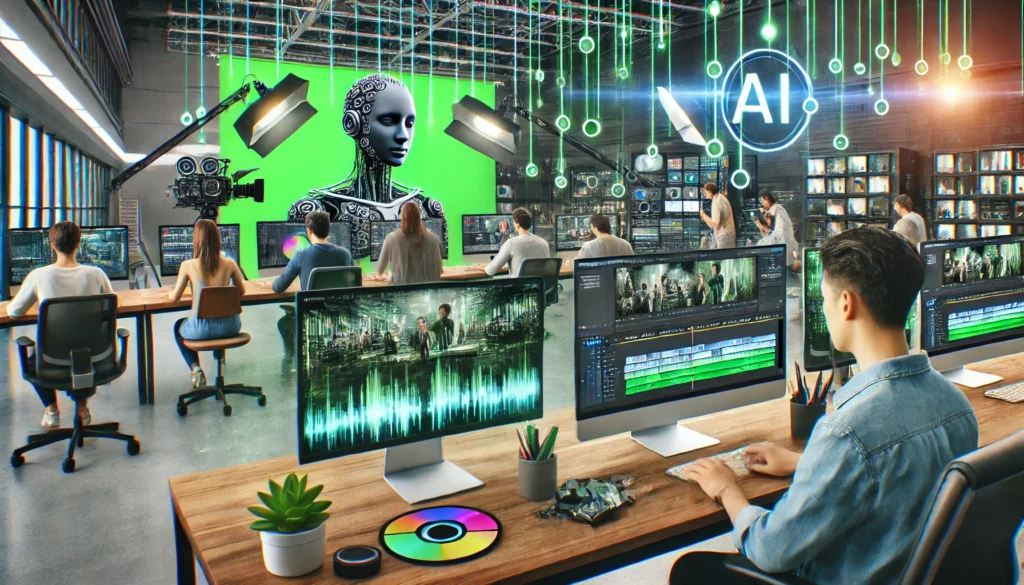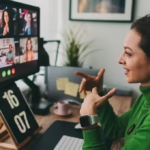Introduction
The rapid advancement of artificial intelligence is changing the landscape of nearly every industry, and the realm of video production is no exception. A fascinating development in this space is the emergence of AI actors digital avatars or virtual humans powered by artificial intelligence that can mimic human expressions, lip-sync dialogue, and even display emotions. These AI-generated personas are transforming the way videos are produced, distributed, and consumed across various sectors, from entertainment and advertising to education and corporate communication.
In this article, we explore what AI actors are, how they work, and how they are revolutionizing modern video production.
What Are AI Actors?
AI actors are synthetic characters created using artificial intelligence technologies such as machine learning, deep learning, and computer vision. They can be realistic human avatars or animated characters designed to perform in videos just like real human actors.
These digital personas are capable of:
- Speaking in multiple languages with natural voice modulation
- Displaying facial expressions, gestures, and emotions
- Lip-syncing with high accuracy to pre-written scripts
- Responding to inputs and adjusting performance dynamically
Often powered by platform such as Invideo AI, AI actors are being used in marketing videos, training content, explainer videos, entertainment clips, and more.
The Technology Behind AI Actors
AI actors rely on a combination of cutting-edge technologies, including:
- Natural Language Processing (NLP): Enables the AI to understand and deliver scripts in human-like language with correct tone, pace, and pronunciation.
- Generative Adversarial Networks (GANs): Used to generate realistic facial animations and video sequences.
- Deepfake Technology: Helps in creating hyper-realistic representations of faces by overlaying digital faces on real ones or generating them from scratch.
- 3D Modeling and Motion Capture: Adds depth and realistic motion to avatars, making them capable of gesturing and moving like humans.
- Voice Cloning and AI Voice Generation: These tools synthesize human-like voices with custom accents, tones, and emotions, sometimes cloned from real voices.
How AI Actors Are Being Used in Video Production
1. Corporate Training and Internal Communication
AI actors are commonly used in e-learning platforms and training videos, delivering tutorials and instructions with clarity and consistency. Companies use them for:
- Employee onboarding
- Compliance training
- Safety procedures
2. Marketing and Advertising
Brands are leveraging AI actors to create product demo videos, testimonial simulations, and ads without the cost and logistics of hiring actors, renting studios, or conducting shoots.
3. YouTube and Content Creation
Faceless YouTube creators are using AI actors to build channels in niches like tech reviews, tutorials, and storytelling without appearing on camera.
4. Customer Support Videos
Instead of chatbots or lengthy FAQs, companies can use AI actors to provide interactive video responses, guiding users through troubleshooting steps or product usage.
5. Entertainment and Film
While still in the experimental stage for full-length features, short films and music videos are starting to use AI-generated actors for minor roles, background characters, or even starring parts.
Benefits of Using AI Actors in Video Production
1. Cost-Effective
AI actors eliminate the need for expensive equipment, location shoots, makeup artists, and post-production costs associated with traditional filming.
2. Time-Saving
Videos that used to take weeks to produce can now be generated in hours. This rapid turnaround helps businesses stay agile with their content strategies.
3. Multi-Language Support
AI actors can speak in multiple languages with native-level fluency, making them ideal for global campaigns and international audiences.
4. Consistency and Scalability
Unlike human actors, AI avatars deliver uniform performance every time. This is especially useful for training or instructional videos where consistency is key.
5. Creative Flexibility
AI actors can be customized with different appearances, voices, and styles. This creative freedom allows brands to develop unique identities or mascots.
Challenges and Limitations
Despite the advantages, AI actors come with a few limitations:
- Lack of Emotional Depth: While facial expressions can be mimicked, AI still struggles to capture nuanced human emotions required for dramatic or comedic roles.
- Legal and Ethical Concerns: The rise of AI-generated personas has sparked debates over consent, likeness rights, and the ethical implications of using synthetic humans.
- Cultural Sensitivity: AI actors can unintentionally produce content that appears culturally insensitive or inappropriate due to a lack of context or cultural awareness.
- Overuse Risk: If brands over-rely on AI actors, their content may feel generic or disconnected, missing the authenticity that real humans bring.
The Future of AI Actors
The future of AI actors is incredibly promising. With the continuous improvement of AI algorithms, we can expect:
- Hyper-Realistic Performances: Better emotional intelligence, vocal inflection, and natural body language.
- Interactive AI Avatars: Characters that can respond to real-time queries in virtual assistants, video calls, or metaverse platforms.
- Widespread Use in the Metaverse: AI actors will populate virtual worlds as brand representatives, influencers, or even companions in immersive environments.
- AI Actor Marketplaces: Just as we have stock photo libraries, we might soon see marketplaces offering pre-built or customizable AI actors for different industries.
Top Platforms for Creating AI Actors
Here are some of the leading platforms that businesses and creators are using to produce AI-actor-powered content:
- Synthesia: Offers over 140+ avatars and supports more than 120 languages. Great for corporate and training videos.
- D-ID: Known for its “talking head” AI that animates still images into lifelike avatars.
- DeepBrain AI: Focuses on hyper-realistic AI newscasters and digital humans.
- Hour One: Turns real people into AI avatars and is ideal for education and training content.
- Invideo AI: While primarily a video generation platform, it supports AI avatar integration for business and social media content.
How to Start Using AI Actors
If you’re considering integrating AI actors into your video production workflow, here’s a quick roadmap:
- Define Your Goal: Determine whether you need videos for marketing, training, or content creation.
- Choose a Platform: Select an AI actor tool that aligns with your budget and use case.
- Write a Script: Prepare a clear and engaging script. Many platforms allow AI script generation too.
- Select the Avatar: Pick from existing avatars or create a custom one that fits your brand image.
- Edit and Customize: Add background visuals, music, subtitles, and branding elements.
- Export and Share: Publish your video across platforms like YouTube, LinkedIn, or your website.
Conclusion
AI actors are redefining the boundaries of video production. What once required cameras, studios, actors, and teams of editors can now be accomplished with a few clicks. For startups, educators, marketers, and content creators, this technology opens the door to limitless possibilities.
While there are still hurdles to overcome in terms of realism and ethics, the efficiency, scalability, and affordability of AI actors make them a powerful tool in modern media. As AI continues to evolve, the line between digital and human storytelling will blur, creating a new era of interactive and intelligent video experiences.
If you’re in the business of content, it’s time to consider adding AI actors to your creative toolkit. They’re not just a trend they’re the future of storytelling.


